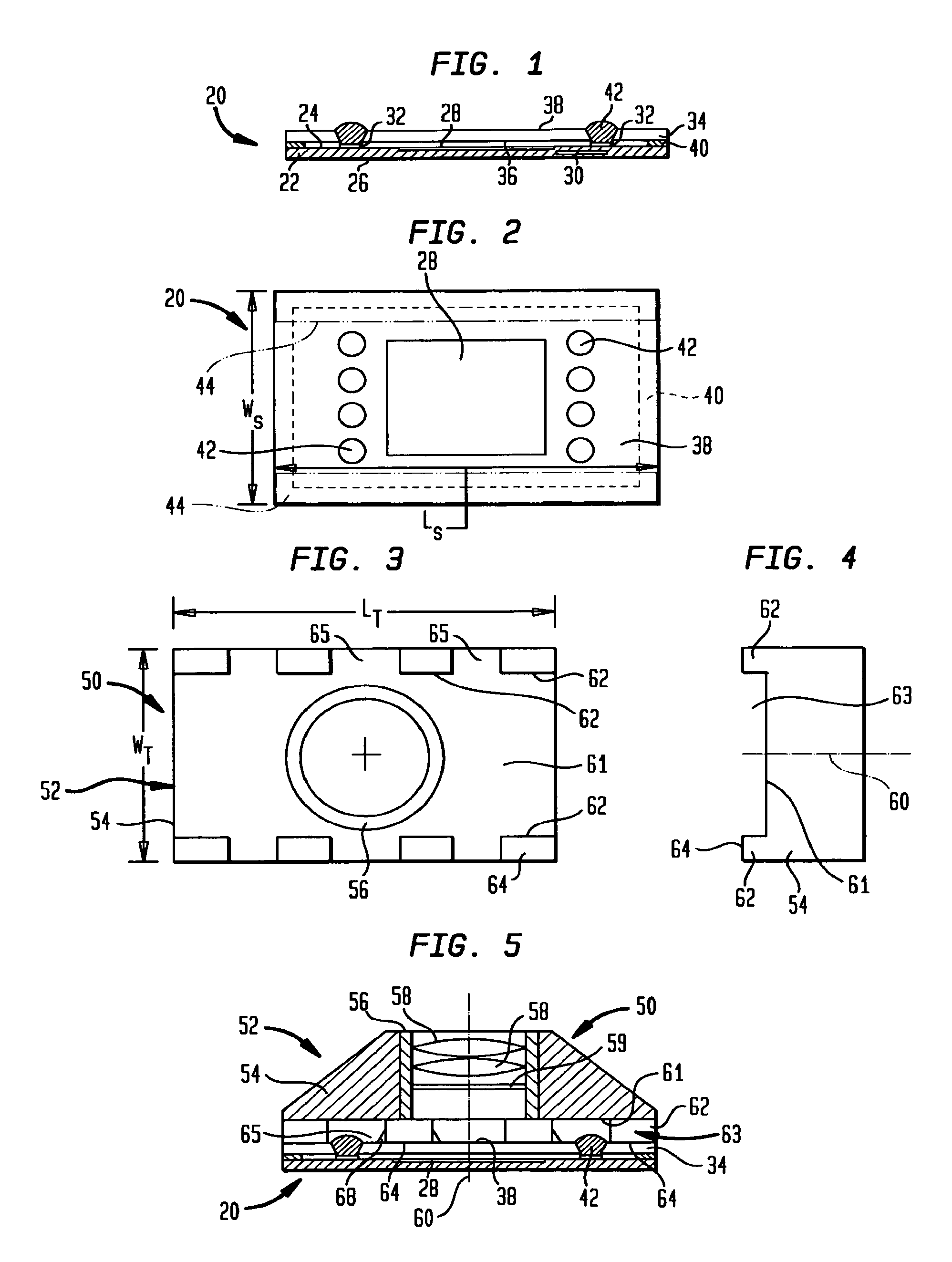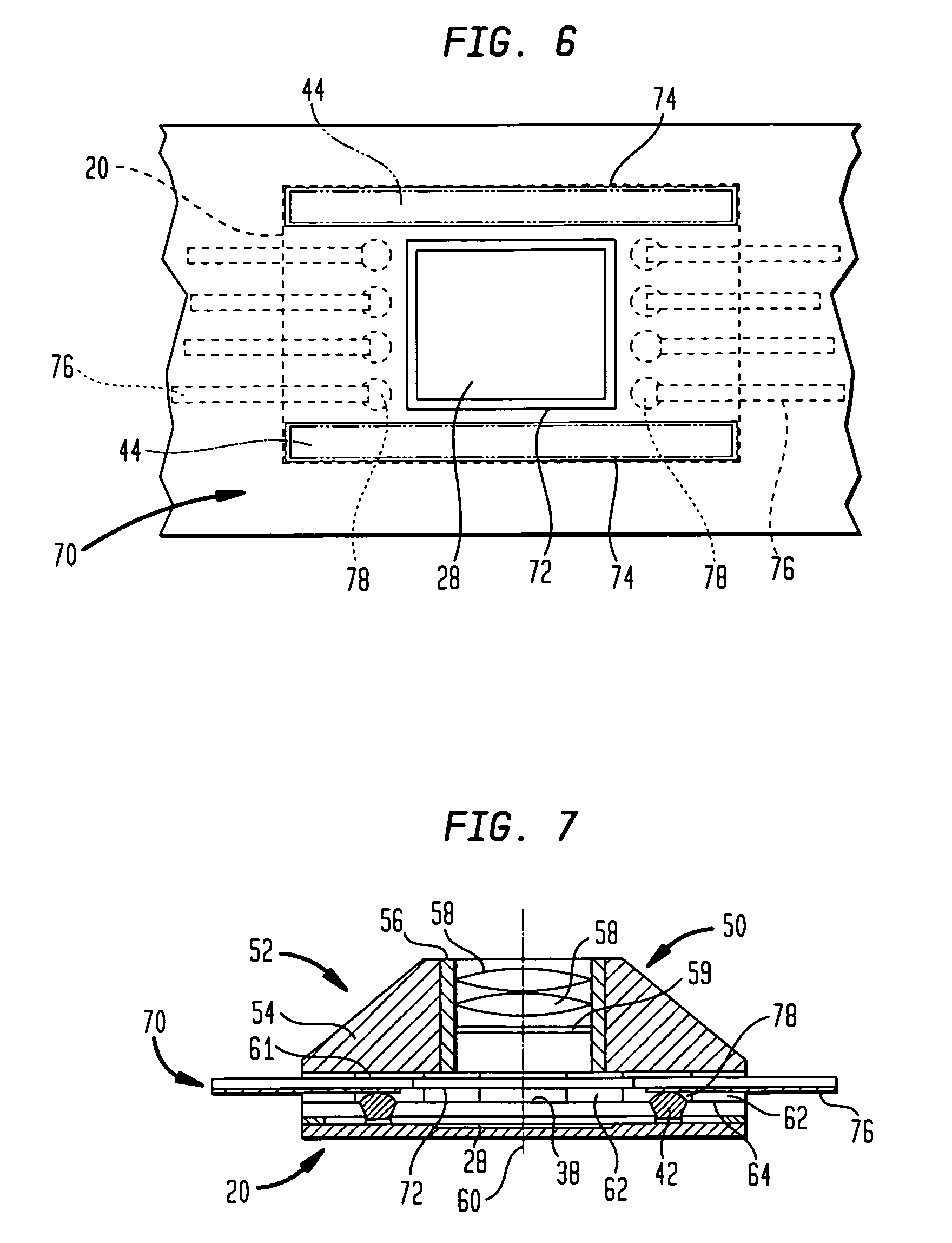Compact lens turret assembly
a technology of optical turrets and compact lenses, which is applied in the direction of radio frequency controlled devices, instruments, television systems, etc., can solve the problems of complicated assembly design, increased overall device size, and difficulty in precise positioning
- Summary
- Abstract
- Description
- Claims
- Application Information
AI Technical Summary
Benefits of technology
Problems solved by technology
Method used
Image
Examples
Embodiment Construction
[0024]A module in accordance with one embodiment of the present invention includes a sensor unit 20 (FIGS. 1 and 2). Sensor unit 20 includes a semiconductor chip 22 having a front or top surface 24 and an oppositely directed rear or bottom surface 26. Front surface 24 includes an imaging area 28. Chip 22 includes electronic circuits, schematically indicated at 30 in FIG. 1, for generating one or more electrical signals representing an optical image impinging on imaging area 28. Numerous electrical circuits are well known in the imaging art for this purpose. For example, the semiconductor chip 22 may be a generally conventional charge-coupled device (CCD) imaging chip with conventional circuits such as clocking and charge-to-voltage conversion circuits. Any other conventional circuits may be used. Chip 22 has electrical connections or contacts 32 exposed at front surface 24 and electrically connected to the internal circuitry 30.
[0025]Sensor unit 20 also includes a cover 34 having an...
PUM
 Login to View More
Login to View More Abstract
Description
Claims
Application Information
 Login to View More
Login to View More - R&D
- Intellectual Property
- Life Sciences
- Materials
- Tech Scout
- Unparalleled Data Quality
- Higher Quality Content
- 60% Fewer Hallucinations
Browse by: Latest US Patents, China's latest patents, Technical Efficacy Thesaurus, Application Domain, Technology Topic, Popular Technical Reports.
© 2025 PatSnap. All rights reserved.Legal|Privacy policy|Modern Slavery Act Transparency Statement|Sitemap|About US| Contact US: help@patsnap.com



